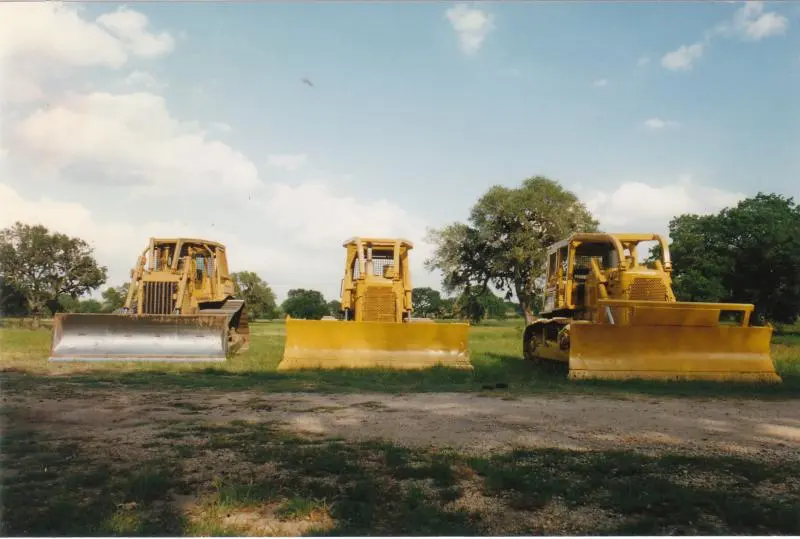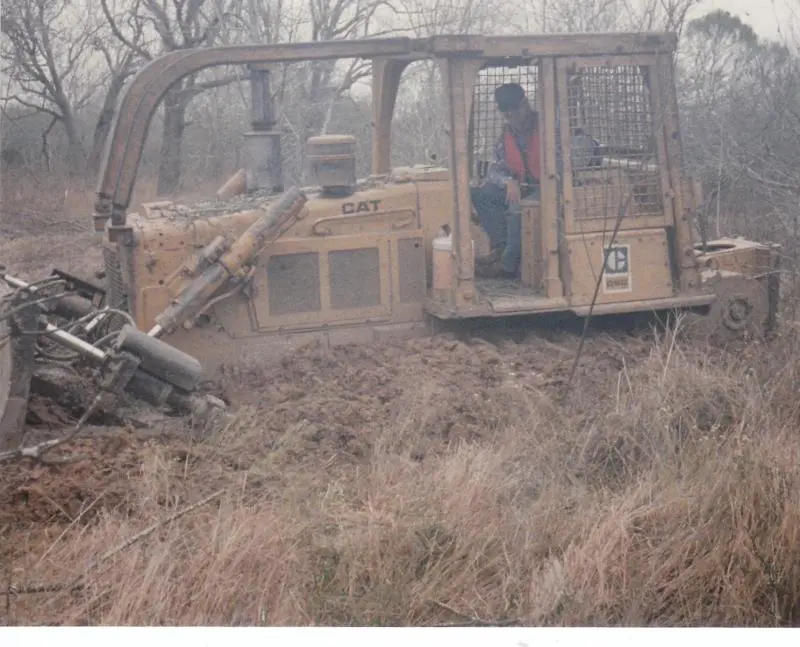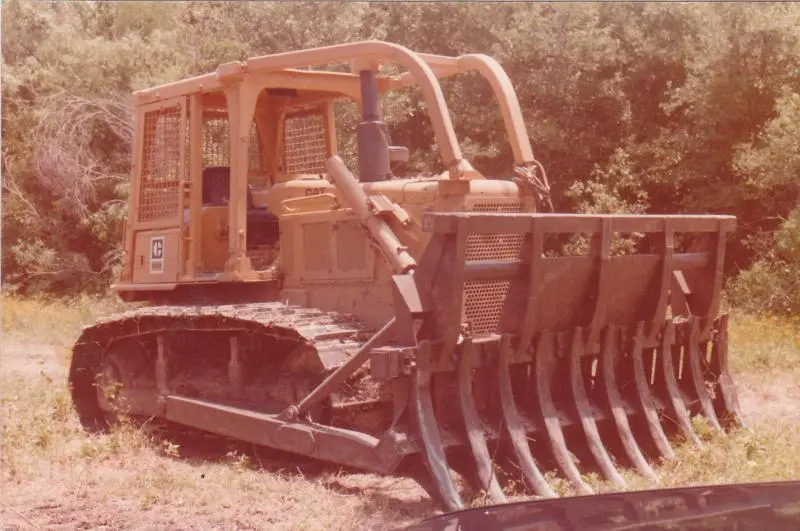


Thank you Craig,
I did finally find a dual tilt blade in the back of the parts manual for a 4X6608-up D6D. Pretty conventional cylinder piping arrangement.
Pete, take another look at that parts diagram. I don't see any Tees. Looks to me like oil flows to one cylinder, out the rod end and all the way across to the rod end of the other cylinder. I could be wrong but that is what I see.
Craig, bet you wish you still had that D6 and it was still that new.
You have a wonderful day. Best wishes. Deas Plant.
Hi, Glum.
Makes sense ter mee. Oil flows into back of left ram to tilt right and into back of right ram to tilt left. Whichever ram it is flowing into, it returns to the valve bank and tank from the other side.
Or at least that's the way it seems to me - - - - - - BUTTTT, I have been known to be wrong.
Just my 0.02.
No contest there, no tees sequence is what it is.
Yes Glum, I still think about that tractor. You and Deas Plant are correct, that is how the twin tilt is plumbed.
I saw people over-think the twin tilt set-up in other threads so here are some points that might help others understand:
1. The tilt cylinders do work opposite each other. The tilt cylinder on one side extends while the tilt cylinder on the other side retracts.
2.There is no “dead tilt cylinder” when the blade is tilted as both cylinders are dual acting.
3.Both cylinders exert their rated force even though they are plumbed together, in the same manner that the two lift cylinders work together.
Thanks,
Craig
In this set up, the cylinders are single acting, pump pressure can only go to one end of each cylinder, the other end is 'dead' because it is linked to the other cylinder, not the control valve. This is why the cylinders are so large in diameter, to reduce speed and reduce circuit pressure caused by outside forces.
I wonder if OM can turn up any service manual instruction on how to fill the dead side with oil.
I ran a small fleet of D6D's equipped like this for a year, they came assembled and I can't remember having reason to work out how the system worked or take the ram lines apart.
If these rams have the valves in the pistons like the main rams use bleeding would happen automatically....
I don't have any service info on twin tilt.
There is nothing unique about the tilt cylinders and the control valve looks to be conventional dual acting spool type.
Looks to me like it's just straight series plumbing from piston side to rod side. System would be pressure/volume self balancing to compensate for the rod displacement.
Hello catsilver, I hope this explanation helps, when oil enters one of the tilt cylinders it is under pressure from the hydraulic system which causes that tilt cylinder to extend and forces oil from the other side of that cylinder’s piston to enter the “common” tube (the tube that connects the two tilt cylinders together) that oil then is forced into the opposite tilt cylinder which causes that tilt cylinder to retract forcing oil from the other side of that cylinder’s piston to return to the hydraulic system’s tank.
I owned and operated the D6D in the picture from 1981 until 2000. The majority of my work was clearing the heavy South Texas brush which caused the tilt lines to accumulate damage over time. When one of the four outboard lines (the ones connected directly to the tilt cylinders) eventually failed, oil would spray out with equal force when the blade control was moved to tilt in either direction, it did not matter if the hose connected the tilt cylinder to the hydraulic system or to the “common” tube. I would replace the failed hose and return to work. There was no need to bleed air from any part the hydraulic system.
The twin tilt system is simple and efficient, there are no dead “sides”, “lines”, “pistons” nor “cylinders”. There is no trapped or isolated oil in the system. The tilt cylinders are both dual acting.
There is no special consideration given to which side of a tilt cylinder's piston is under pressure in a single tilt cylinder system and none is necessary in the twin tilt system.
Thanks,
Craig